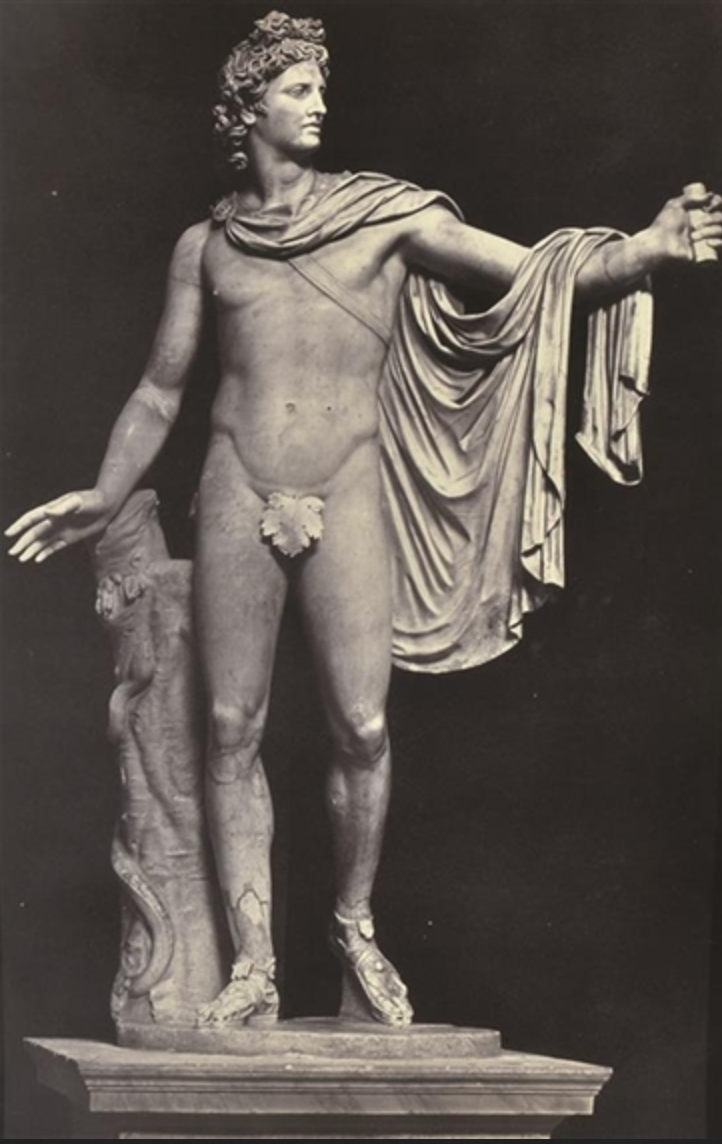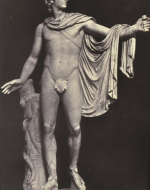Created by Stacey Smythe on Tue, 04/27/2021 - 10:55
Description:
The Apollo Belvedere, a 2nd century CE Roman copy of a 4th century BCE Greek bronze, is so named because of its one-time home in the small Bramante-designed sculpture court (Cortile del Belvedere) of the summer residence connected to the Vatican Palace. Having been transported to Paris amongst the trove of artworks confiscated by Napoleon as part of his 1796 campaign in Italy, it formed part of the Louvre’s collection until 1815 when it was repatriated to the Vatican, and where it has remained in the Museo Pio-Clementino since. As “the highest ideal of art among the works of antiquity that have escaped its destruction” (Winckelmann 332) —according to 18th century German art historian and archaeologist, J. J. Winckelmann—the Apollo Belvedere has been a favorite subject of study and object of emulation among artists over multiple centuries: northern Renaissance German painter Albrecht Dürer reversed the pose for his figure of Adam in his 1504 Adam and Eve; neoclassical Italian sculptor Antonio Canova drew inspiration from its "noble simplicity and quiet grandeur”—a phrase Winckelmann was known to liberally apply to any and all ancient works for which he had a particular fondness—for his 1801 Perseus. Despite ocassional criticism of the Apollo (noted late 18th/early 19th-century English essayist William Hazlitt called it “positively bad,” and noted Victorian art critic John Ruskin offers a less than flattering assessment of it), full-length plaster and bronze reproductions of the sculpture remained central to the cast collections of both individual art connoisseurs, as well as academic institutions. Less expensive, but equally impressive interpretive sketches, etchings, and paintings of the sculpture were still among the most popular souvenirs of wealthy 19th-century Grand Tour travelers.
Copyright:
Associated Place(s)
Part of Group:
Featured in Exhibit:
Artist:
- Robert MacPherson


